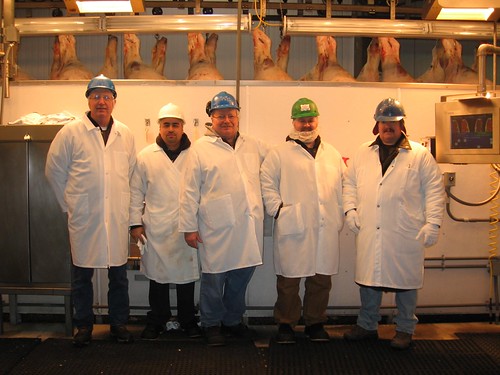Consumers and industry look for the USDA grade shields as trusted symbols of wholesome, high-quality American beef. USDA’s Agricultural Marketing Service (AMS), the agency responsible for grading, continues to explore ways to more efficiently conduct business. Most recently, we used beef instrumentation grading technology to initiate an audit-based Beef Grading Pilot Program at a facility in Toppenish, Washington in August 2012.
Although beef instrumentation grading technology has been in use for several years, it has not reduced the number of graders required at each grading facility until now. By working with the Meat Graders’ Union, we were able to come to an agreement to pilot a program that would have beef industry employees trained to interpret and apply the Official USDA Standards for Grades of Carcass Beef under the oversight of a USDA meat grader.
After the beef is graded, it is then inspected by USDA’s Food Safety and Inspection Service, the agency responsible for ensuring that meat is safe, wholesome, and correctly labeled and packaged.
Successful candidates are required to pass both written tests and practical cooler grading exercises before being certified and licensed to apply federal beef grades. These certified industry employees perform on-line carcass evaluations using the approved instrumentation outputs for beef quality grade factors, such as marbling. Quarterly carcass testing and evaluation is performed to assure continued accuracy of the industry employees. A USDA meat grader from AMS monitors and randomly audits the final carcass grades throughout the day to help ensure that the standards are continuously met.
This approach to audit-based grading could lead to significantly reduce costs for traditional, fee-for-service grading. Before this pilot, the Washington-based company used two full-time USDA graders. Once the pilot began, the company started using four plant employees trained and qualified to apply USDA beef grades under the supervision of one resident USDA meat grader. This helped reduce their grading costs by 50 percent. The USDA meat grader will also perform Quality Services Audits related to source and age verification for export markets, yielding further cost savings.
With the success of the program, additional pilots are planned, with more companies expressing interest in developing similar audit-based grading. AMS will continue to evaluate the success of the Washington Beef program. If your company is interested in learning more about this new approach to grading, call (720) 497-2525.
Read our previous USDA blogs on the meat grading process, including the use of instruments to accurately assign beef quality grades.

